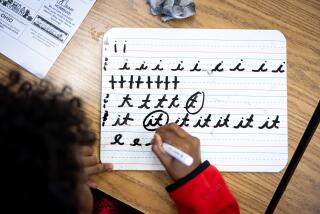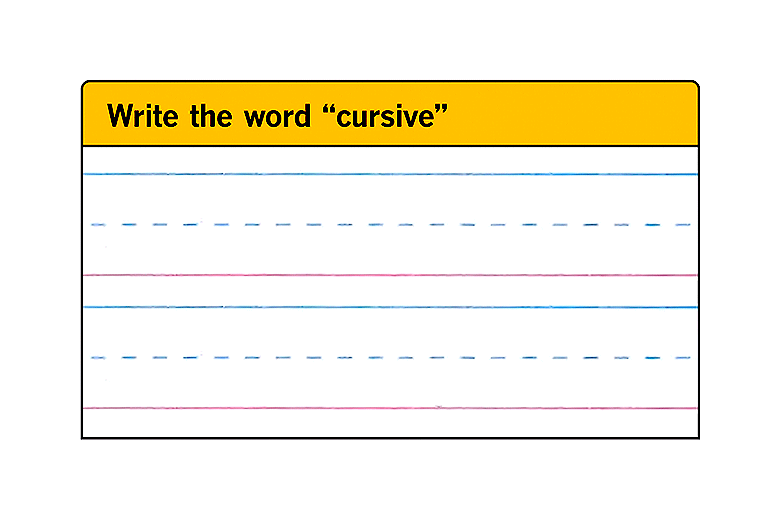Italic Script Could Improve Handwriting and Communications, Calligrapher Says
- Share via
SCOTTSDALE, Ariz. — Everybody complains about penmanship, but few do anything about it.
Calligrapher Bob Lampee, unhappy with the scribbles and chicken scratches he sees, is trying to change that.
Children have been taught manuscript printing in the first grade for the last century. It is legible, but “as slow as molasses” and 6-year-olds have trouble making circles with their fat pencils, said Lampee, founder of the Calligraphic Society of Arizona and owner of a calligraphy business that hand-letters certificates, diplomas and other documents and publications.
Difficult for Children
Lampee said that in the third grade, about the time children are mastering manuscript as a form of handwriting, they are taught what is called commercial cursive. With its loops and slants, it is difficult for children to learn and can be difficult to read, he said.
The switch from printing to commercial cursive handwriting is often traumatic for children, Lampee noted.
Commercial cursive writing also “falls apart” and becomes illegible when students try to write with any speed, he said.
In the Dead-Letter File
As an example of the failure of handwriting techniques used in this country, Lampee pointed to the 45 million pieces of mail each year that end up in the U.S. Postal Service dead-letter file, mostly because of illegibly written addresses.
He proposes teaching children a form of handwriting known as italic, which is based on a 16th-Century script known as Chancery. Italic is legible and fast, Lampee pointed out, adding that students, teachers and parents seem to like it when he has taught it free in more than 80 school workshops.
Italic also is a beautiful handwriting and it demands attention, which increases one’s ability to communicate, he said.
Sweden Adopted Italic
In Oregon, the state Board of Education approved italic as an optional form of handwriting in 1974, and the Portland school system has adopted italic as its form of handwriting instruction, Lampee said. Sweden adopted italic nationally and it is used in other schools in Europe, he said.
First-graders could learn to form the italic letters with a regular pen or pencil and in second grade they could be taught to form the letters smaller. By third grade, the students could begin using a broad-edged pen that gives italic its characteristic look, Lampee said.
He said that using the inexpensive pens would be a reward for the students.
No One Is Pushing
Jim Reith, Scottsdale School District language arts coordinator, said he also is concerned about the lack of attention to teaching good handwriting but added that the concern is not generally shared by educators. No one is pushing very hard to improve handwriting, and legibility seems to be the only standard, he said.
“In general, handwriting is fairly deplorable in this country,” Reith said. That has not always been the case; “a good hand” used to be “part of one’s public identity,” he added.
The decline of handwriting has been aided by typewriters, word processors and calculators, Reith said.
Difficult Transition
It would take a lot of public pressure to reform handwriting, he said, explaining that the transition to italic would be difficult because teachers reared on other methods would have to be retrained.
Lampee does not see that as a great obstacle. Members of the Calligraphic Society could train teachers, at no cost if necessary, and teachers and calligraphers could work together to develop a teaching manual, he said.
More to Read
Sign up for Essential California
The most important California stories and recommendations in your inbox every morning.
You may occasionally receive promotional content from the Los Angeles Times.













